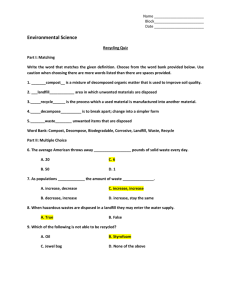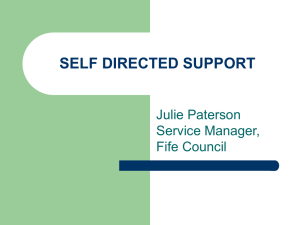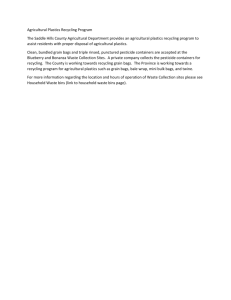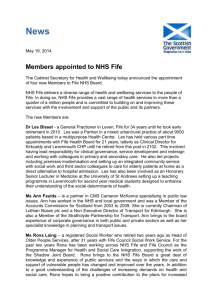Development of a Waste Management Programme within Renal
advertisement
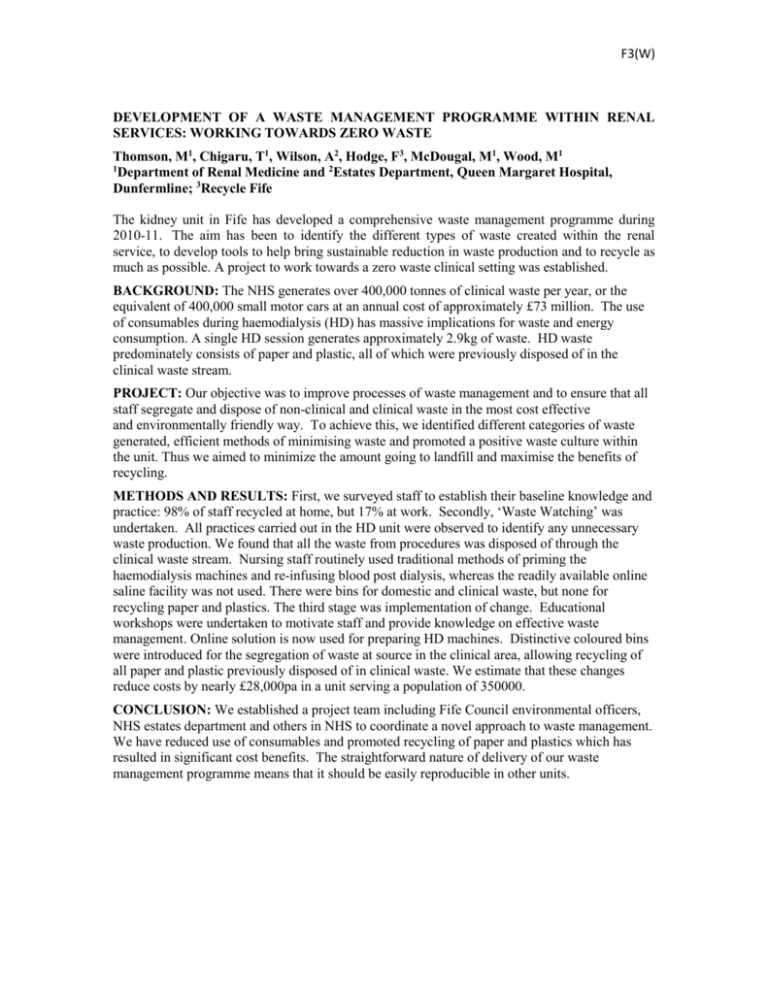
F3(W) DEVELOPMENT OF A WASTE MANAGEMENT PROGRAMME WITHIN RENAL SERVICES: WORKING TOWARDS ZERO WASTE Thomson, M1, Chigaru, T1, Wilson, A2, Hodge, F3, McDougal, M1, Wood, M1 1 Department of Renal Medicine and 2Estates Department, Queen Margaret Hospital, Dunfermline; 3Recycle Fife The kidney unit in Fife has developed a comprehensive waste management programme during 2010-11. The aim has been to identify the different types of waste created within the renal service, to develop tools to help bring sustainable reduction in waste production and to recycle as much as possible. A project to work towards a zero waste clinical setting was established. BACKGROUND: The NHS generates over 400,000 tonnes of clinical waste per year, or the equivalent of 400,000 small motor cars at an annual cost of approximately £73 million. The use of consumables during haemodialysis (HD) has massive implications for waste and energy consumption. A single HD session generates approximately 2.9kg of waste. HD waste predominately consists of paper and plastic, all of which were previously disposed of in the clinical waste stream. PROJECT: Our objective was to improve processes of waste management and to ensure that all staff segregate and dispose of non-clinical and clinical waste in the most cost effective and environmentally friendly way. To achieve this, we identified different categories of waste generated, efficient methods of minimising waste and promoted a positive waste culture within the unit. Thus we aimed to minimize the amount going to landfill and maximise the benefits of recycling. METHODS AND RESULTS: First, we surveyed staff to establish their baseline knowledge and practice: 98% of staff recycled at home, but 17% at work. Secondly, ‘Waste Watching’ was undertaken. All practices carried out in the HD unit were observed to identify any unnecessary waste production. We found that all the waste from procedures was disposed of through the clinical waste stream. Nursing staff routinely used traditional methods of priming the haemodialysis machines and re-infusing blood post dialysis, whereas the readily available online saline facility was not used. There were bins for domestic and clinical waste, but none for recycling paper and plastics. The third stage was implementation of change. Educational workshops were undertaken to motivate staff and provide knowledge on effective waste management. Online solution is now used for preparing HD machines. Distinctive coloured bins were introduced for the segregation of waste at source in the clinical area, allowing recycling of all paper and plastic previously disposed of in clinical waste. We estimate that these changes reduce costs by nearly £28,000pa in a unit serving a population of 350000. CONCLUSION: We established a project team including Fife Council environmental officers, NHS estates department and others in NHS to coordinate a novel approach to waste management. We have reduced use of consumables and promoted recycling of paper and plastics which has resulted in significant cost benefits. The straightforward nature of delivery of our waste management programme means that it should be easily reproducible in other units.







